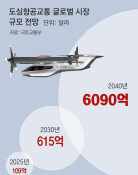N. Korea Removed From U.S. Terrorism Blacklist
N. Korea Removed From U.S. Terrorism Blacklist
Posted October. 13, 2008 07:58,
Security on the Korean Peninsula is at a turning point with North Koreas removal from the U.S. list of terrorism sponsoring states Saturday after 20 years and nine months.
The United States and North Korea agreed on the verification protocol on Pyongyangs nuclear facilities, a move which led to the delisting. Along with this dramatic turn of events, photos of North Korean leader Kim Jong Il were released Saturday, confirming his first public appearance in 58 days.
U.S. State Department spokesman Sean McCormack told a news conference Saturday that Secretary of State Condoleezza Rice rescinded North Koreas designation as a state sponsor of terrorism, saying North Korea agreed on a series of verification methods for denuclearization.
North Korea has stated it will resume disablement of its nuclear facilities. This demonstrates that the six-party principle of action-for-action is working.
The State Department added North Korea to its terrorism list in January 1988 after North Korean agents were implicated in the 1987 bombing of a South Korean airliner.
Pyongyang has agreed to first start verification of its Yongbyon nuclear facilities declared on June 26 and allow nuclear experts to take samples and conduct forensic tests at all of its declared and undeclared sites by mutual consent.
Top U.S. nuclear negotiator Christopher Hill reportedly reached an agreement on a separate verification method while visiting Pyongyang Oct. 1-3, and gained final approval from the Bush administration.
State-run North Korean television aired Saturday morning a series of photos of Kim inspecting a womens artillery unit. His last public appearance had come Aug. 16 in visiting military units.
Kim is believed to have suffered a stroke in August, but the photos show he is still in control, experts said.
A volley of news reports on North Korea also herald significant progress in relations between Washington and Pyongyang.
A breakthrough on the stalled six-way nuclear talks is possible because the interests of the Bush administration, whose term will end early next year, coincide with those of Pyongyang, experts said.
The delisting will give the destitute and isolated country an opportunity to lift itself out of economic difficulty by obtaining much-needed external financial support. North Koreas acceptance of verification will also move the six-party talks toward the third step of nuclear disarmament and could land a foreign policy achievement for the Bush administration.
The agreement on verification of undeclared sites by mutual consent, however, is likely to anger U.S. conservatives and Japan since it is interpreted as a concession to Pyongyang. Tokyo wants Pyongyang to remain on the list because past abductions of Japanese by North Korea have not been resolved.
The verification agreement, however, will get the deadlocked six-way talks back on track, with the top negotiators to the dialogue expected to get together this month. A bumpy road in getting North Korea to get rid of its nuclear arms is expected, however, as Pyongyang is likely to demand additional compensation.
With the release of Kims photos coinciding with North Koreas removal from the U.S. blacklist, prospects have changed that the Stalinist country will not suffer drastic change, Pyongyang watchers said. Rumors over Kims health linger, however, since North Korean media did not say when the photos were taken.
yongari@donga.com sechepa@donga.com
Headline News
- Medical school quotas expanded after 27 years by 1,509
- ‘Pension replacement rate of 44-45% is negotiable,’ says Lee Jae-myung
- 16 out of 20 food companies see cost ratio decrease in 1st quarter
- Oksana Chusovitina with 8 Olympics under her belt gets injured
- Real income effectively reduced amid inflation hikes






